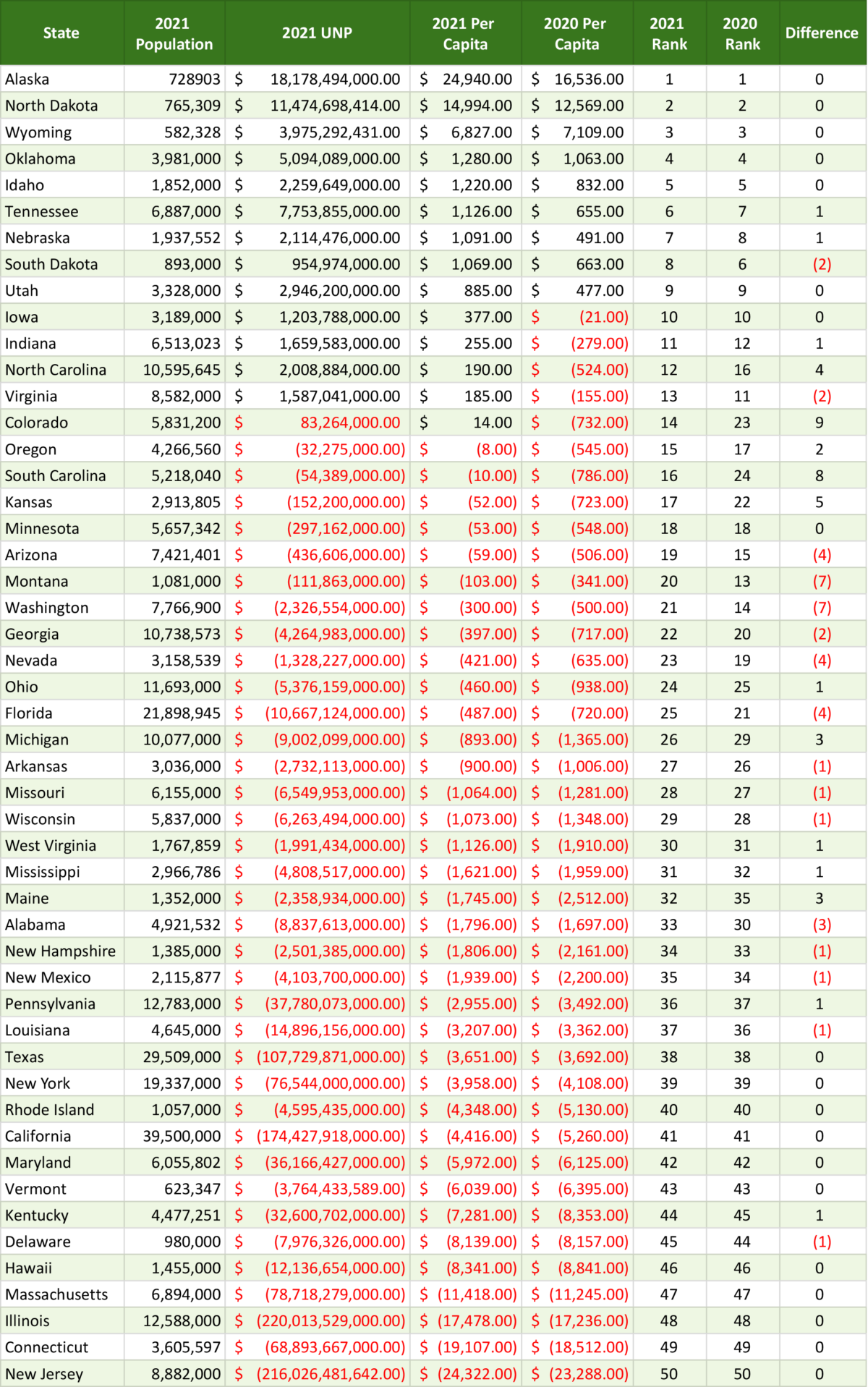California’s 2021 Annual Financial Report Is Finally Here
Commentary The state of California has finally released its latest Annual Comprehensive Financial Report (ACFR) for the year ending June 2021, months after the previous State Controller left the building. This is supposed to be issued within 180 days, not 21 months. We can assume that the June 2022 report will be available a year from now. Unbelievable! The California State Auditor signed the report on March 23, 2023 and did so with a “disclaimer of opinion” for certain portions, meaning “the effects of known or potential misstatements on the respective financial statements are both material and pervasive.” This is the latest that California has ever issued its annual audited financial statements. Sacramento has a billion dollar accounting software system and it is a national joke—but in the accounting world it is an amazing embarrassment. There are even YouTube videos mocking our Governor on the tardiness of issuing a simple financial report! This is the fifth year in a row the Golden State has issued a delinquent accounting report. Since the big day has arrived and the final ACFR for 2021 is finally available, we can now provide a comparison of balance sheets for all 50 states to see what shape they are in. By comparing the 2021 per capita data with that of 2020, provided in the graph below, we find some interesting activities in the COVID-19 era. Except for Kentucky switching places with Delaware, the bottom twelve states are still the bottom dozen states. California is in this bunch, and we continue to hear the clarion call for raising taxes on the rich in order to pay their fair share. Forget that one percent of Californians pay nearly half of the total personal income taxes—not to mention they are already paying the highest personal income tax rates in the nation, but that’s what public employee union controlled states do. They don’t cut expenses; they just raise taxes. There is some good news for Californians. The unrestricted net deficit was reduced by $33.5 billion. It looks like Gov. Newsom may just have allocated a good portion of his historic budget surplus toward reducing the state’s debts. Even after this overdue and necessary spending decision, California is still in 41st place. But better stewardship is still not a cause for legislators in the Capitol to pursue tax increases. The bad news? The word “unemployment” is mentioned 69 times in the ACFR. “The modified opinions are the result of ongoing challenges experienced by one state department in administering California’s unemployment insurance program and preparing its financial statements using the Financial Information System for California (FI$Cal) accounting system.” California and the Employment Development Department’s shoddy bookkeeping owes the Federal government nearly $19.8 billion for unemployment benefit loans and your employer will be paying another $147 per year per employee to pay this debt down. Not Sacramento, which incurred the liability. How’s that for sick financial reporting and transferring bills to others? Governor Newsom, thanks for nothing. On the top of the chart, except for Tennessee and Nebraska jumping over South Dakota, the top eleven states are still the top eleven states. If you’re serious about leaving California, these are the places that should be on the top of your potential relocation list. The unique movement of rankings in the middle half of the nation can be explained with explanations provided in the ACFRs of two states: Colorado and South Carolina. The state of Colorado jumped nine places. The Centennial State had two unique occurrences. The first is that they extended the due date of the filing of personal income tax returns to July 31st, one month after the close of the prior fiscal year. This cash flow timing decision had an amazing impact on their ending cash balances. “Due to the COVID-19 pandemic, the State delayed its statewide income tax filing deadline extension to July 2020 (FY 2021), resulting in less overall cash collections in Fiscal Year 2020, and a significant increase in tax collections in Fiscal Year 2021.” The second is a dramatic decrease in their defined benefit retirement plans unfunded actuarially accrued liabilities. It was explained in its ACFR that three initiatives could be the reason. First, Senate Bill 18-200 (2018) accelerated payments to the plan to the tune of $225 million per year. Aggressively addressing this liability is a smart move. So, increasing contribution rates from employees was also implemented. Second, an experience study was performed which modified several actuarial assumptions, that had a significant impact. The third will provide relief in future years, as the retirement age for new employees has been raised. This state has a focus to be fully funded in 30 years (2048) and will enact automatic adjustments designed to do so, if necessary. South Carolina reduced its unrestricted net deficit, a factor used to calculate the per capita, by $4

Commentary
The state of California has finally released its latest Annual Comprehensive Financial Report (ACFR) for the year ending June 2021, months after the previous State Controller left the building. This is supposed to be issued within 180 days, not 21 months. We can assume that the June 2022 report will be available a year from now. Unbelievable!
The California State Auditor signed the report on March 23, 2023 and did so with a “disclaimer of opinion” for certain portions, meaning “the effects of known or potential misstatements on the respective financial statements are both material and pervasive.”
This is the latest that California has ever issued its annual audited financial statements. Sacramento has a billion dollar accounting software system and it is a national joke—but in the accounting world it is an amazing embarrassment. There are even YouTube videos mocking our Governor on the tardiness of issuing a simple financial report! This is the fifth year in a row the Golden State has issued a delinquent accounting report.
Since the big day has arrived and the final ACFR for 2021 is finally available, we can now provide a comparison of balance sheets for all 50 states to see what shape they are in. By comparing the 2021 per capita data with that of 2020, provided in the graph below, we find some interesting activities in the COVID-19 era.

Except for Kentucky switching places with Delaware, the bottom twelve states are still the bottom dozen states. California is in this bunch, and we continue to hear the clarion call for raising taxes on the rich in order to pay their fair share. Forget that one percent of Californians pay nearly half of the total personal income taxes—not to mention they are already paying the highest personal income tax rates in the nation, but that’s what public employee union controlled states do. They don’t cut expenses; they just raise taxes.
There is some good news for Californians. The unrestricted net deficit was reduced by $33.5 billion. It looks like Gov. Newsom may just have allocated a good portion of his historic budget surplus toward reducing the state’s debts. Even after this overdue and necessary spending decision, California is still in 41st place. But better stewardship is still not a cause for legislators in the Capitol to pursue tax increases.
The bad news? The word “unemployment” is mentioned 69 times in the ACFR. “The modified opinions are the result of ongoing challenges experienced by one state department in administering California’s unemployment insurance program and preparing its financial statements using the Financial Information System for California (FI$Cal) accounting system.”
California and the Employment Development Department’s shoddy bookkeeping owes the Federal government nearly $19.8 billion for unemployment benefit loans and your employer will be paying another $147 per year per employee to pay this debt down. Not Sacramento, which incurred the liability. How’s that for sick financial reporting and transferring bills to others? Governor Newsom, thanks for nothing.
On the top of the chart, except for Tennessee and Nebraska jumping over South Dakota, the top eleven states are still the top eleven states. If you’re serious about leaving California, these are the places that should be on the top of your potential relocation list.
The unique movement of rankings in the middle half of the nation can be explained with explanations provided in the ACFRs of two states: Colorado and South Carolina.
The state of Colorado jumped nine places. The Centennial State had two unique occurrences. The first is that they extended the due date of the filing of personal income tax returns to July 31st, one month after the close of the prior fiscal year. This cash flow timing decision had an amazing impact on their ending cash balances.
“Due to the COVID-19 pandemic, the State delayed its statewide income tax filing deadline extension to July 2020 (FY 2021), resulting in less overall cash collections in Fiscal Year 2020, and a significant increase in tax collections in Fiscal Year 2021.”
The second is a dramatic decrease in their defined benefit retirement plans unfunded actuarially accrued liabilities. It was explained in its ACFR that three initiatives could be the reason. First, Senate Bill 18-200 (2018) accelerated payments to the plan to the tune of $225 million per year. Aggressively addressing this liability is a smart move. So, increasing contribution rates from employees was also implemented. Second, an experience study was performed which modified several actuarial assumptions, that had a significant impact. The third will provide relief in future years, as the retirement age for new employees has been raised. This state has a focus to be fully funded in 30 years (2048) and will enact automatic adjustments designed to do so, if necessary.
South Carolina reduced its unrestricted net deficit, a factor used to calculate the per capita, by $4 billion dollars. This allowed it to move up eight places in the ranking. Their explanation: “Most of this increase resulted from a $2.909 billion increase in federal grants and a $1.909 billion increase in tax revenues. The increases in federal grant monies and tax revenues were the result of large federal grants to fight the COVID pandemic and federal stimulus monies to help keep the United States economy from declining.”
Thanks to COVID-19, there was plenty of federal grant funding going around and these two states used them judiciously to improve their balance sheets. So much so that it impacted the positioning of the 27 states in the middle of the rankings.
Although Montana and Washington reduced their unrestricted net deficits by $200 per person, they both dropped seven places because North Carolina, Colorado, Oregon, South Carolina, and Kansas did a little better.
Now that the pandemic is behind this nation, hopefully, the states can operate as normal. The big question is whether they can appreciate where they stand and the direction they are going.
The population numbers are telling us where people are moving from and where they are moving to. And many in the bottom dozen had better keep this reality in mind as they move forward in the years to come. Excluding California there were seven states with population changes of six figures. The gainers were Washington (110,700), Georgia (121,150), Texas (138,000), Arizona (142,684) and Florida (302,877). The losing states were New York (116,561), Indiana (219,196) and New Jersey (406,994).
If you’re not afraid to pay high taxes and expect low services, but want to move where housing costs are declining thanks to a growing inventory, then New Jersey is calling.
Views expressed in this article are the opinions of the author and do not necessarily reflect the views of The Epoch Times.












